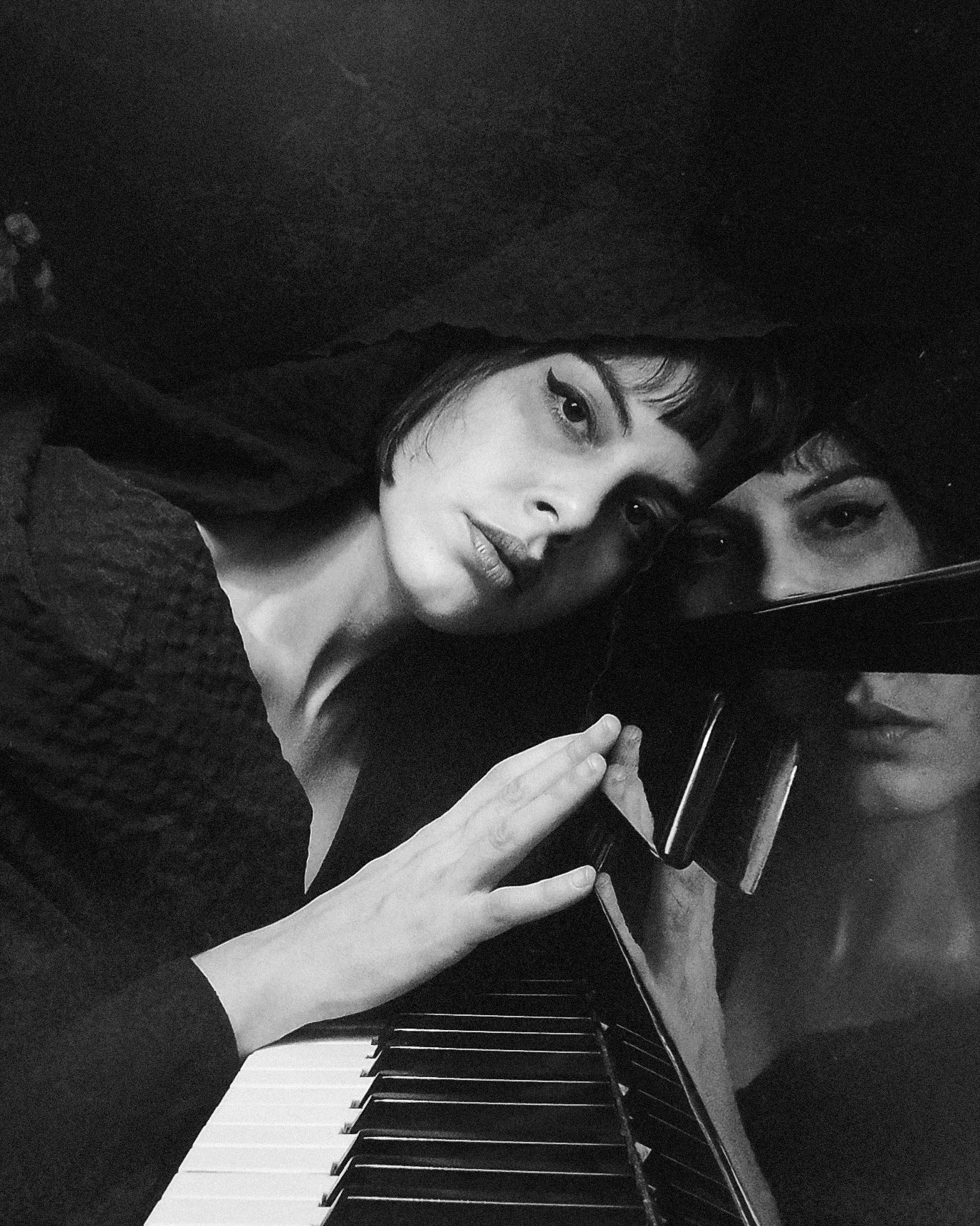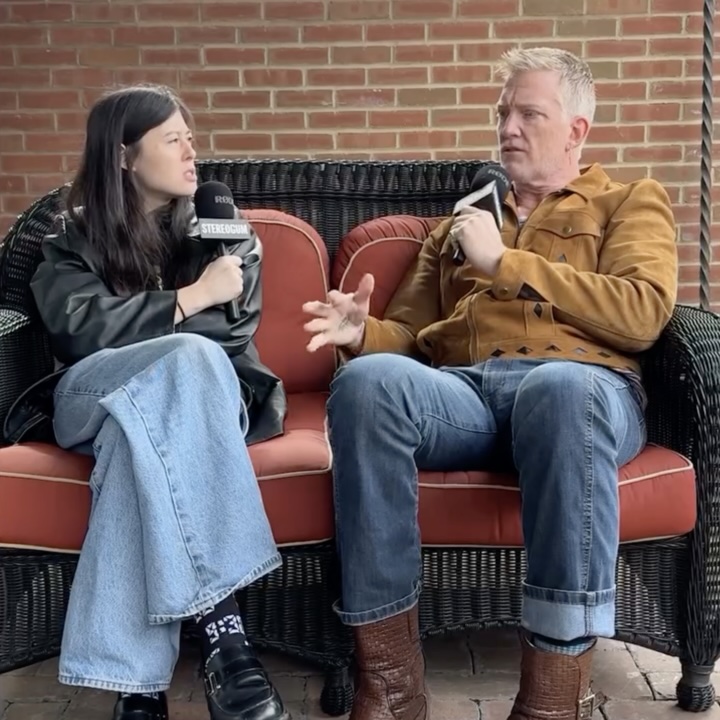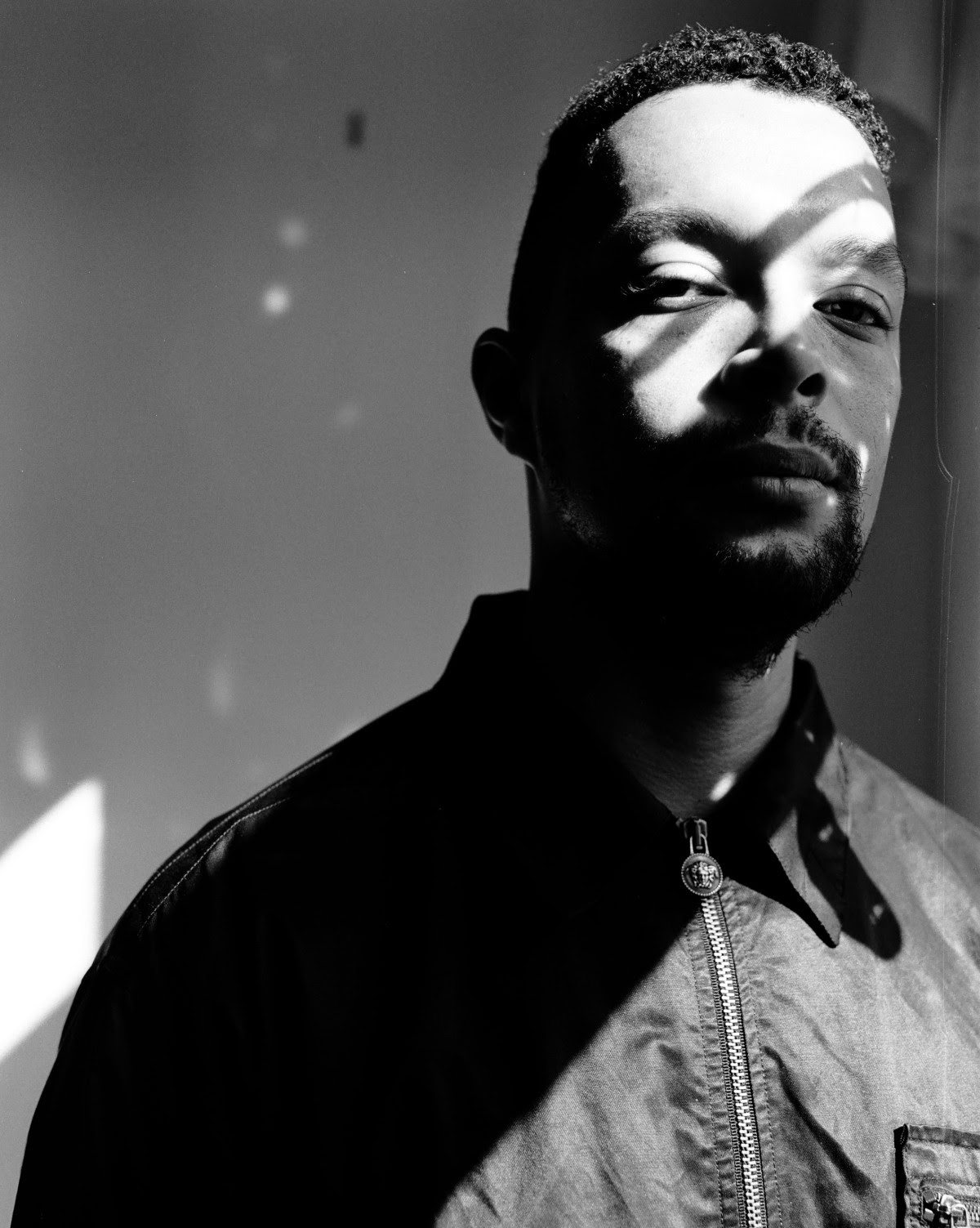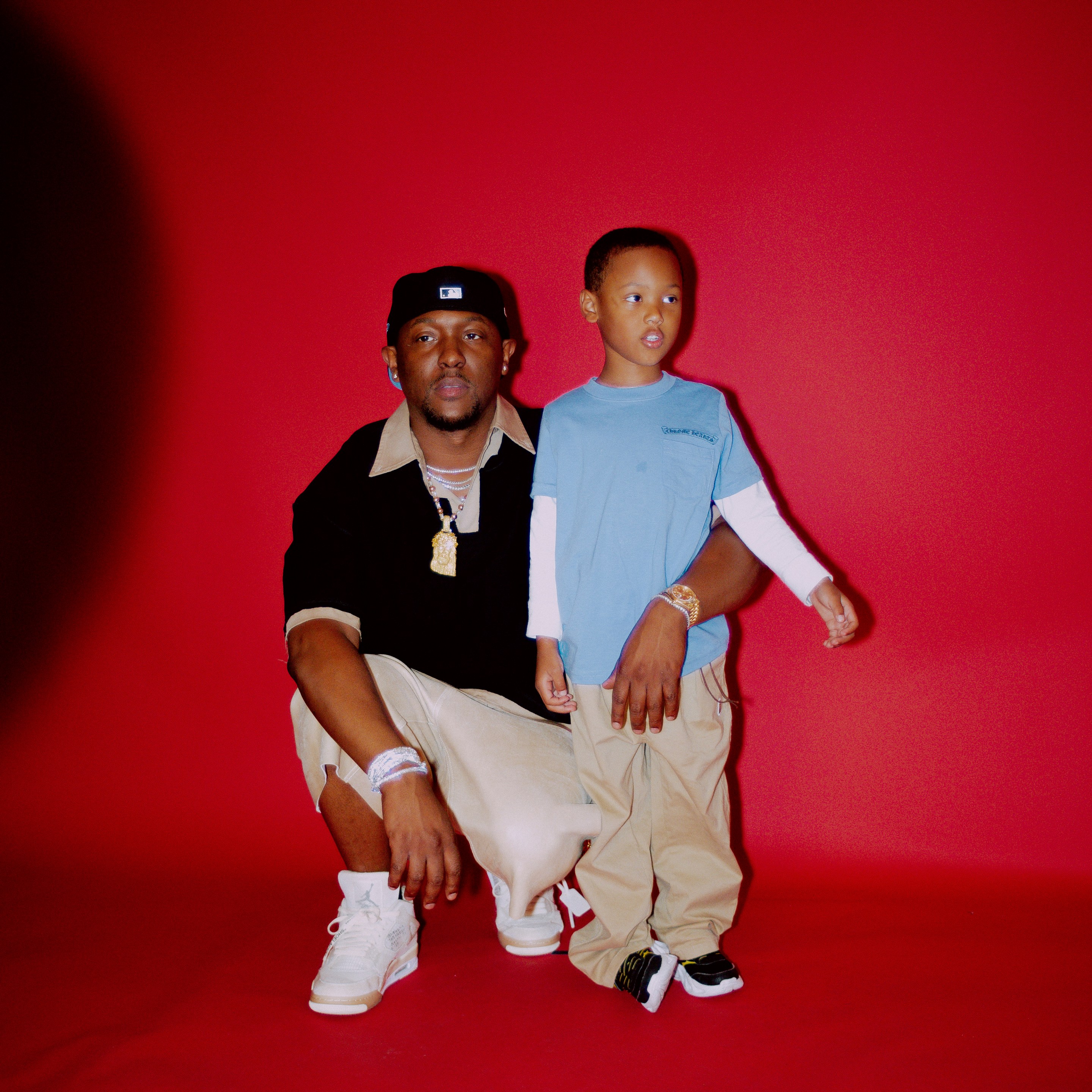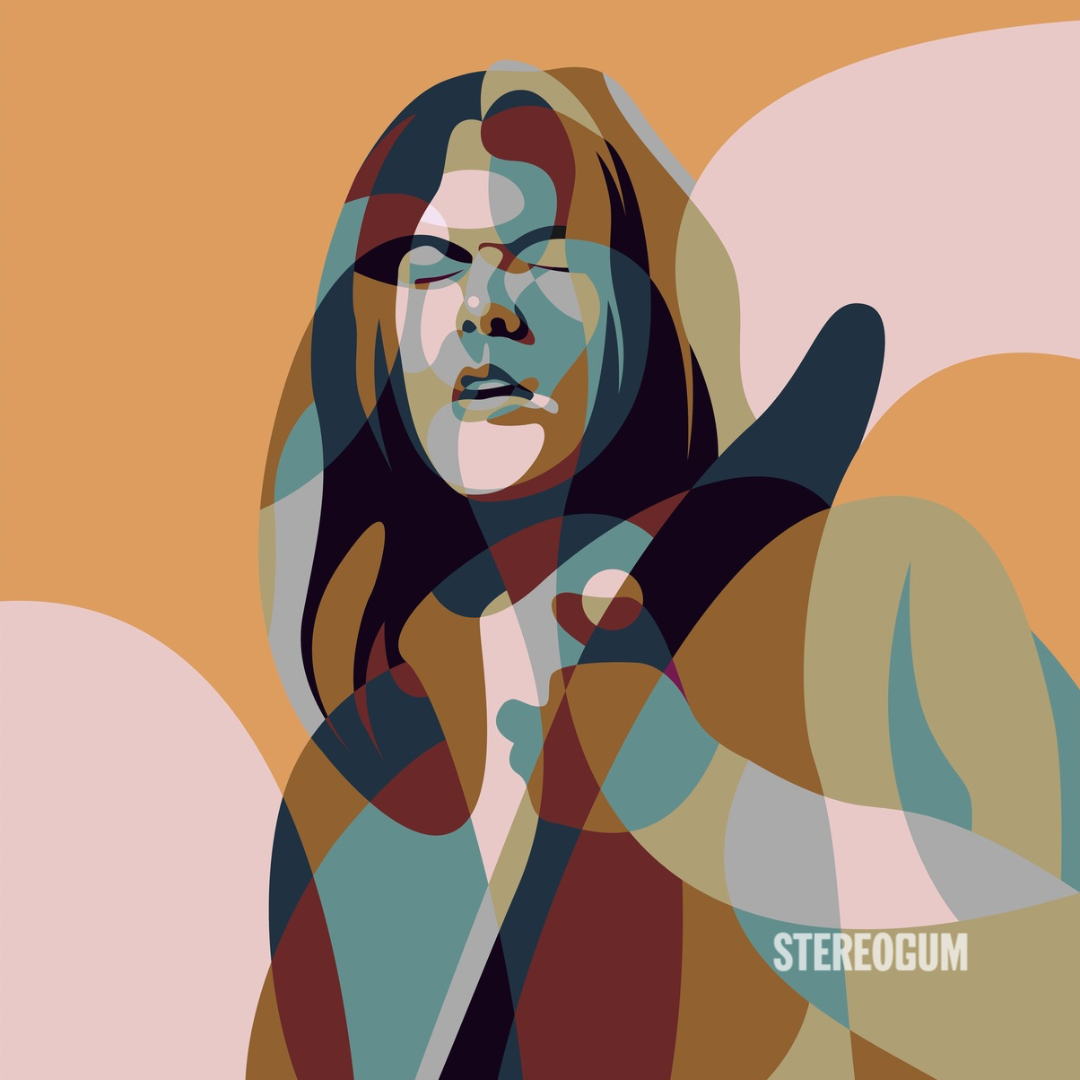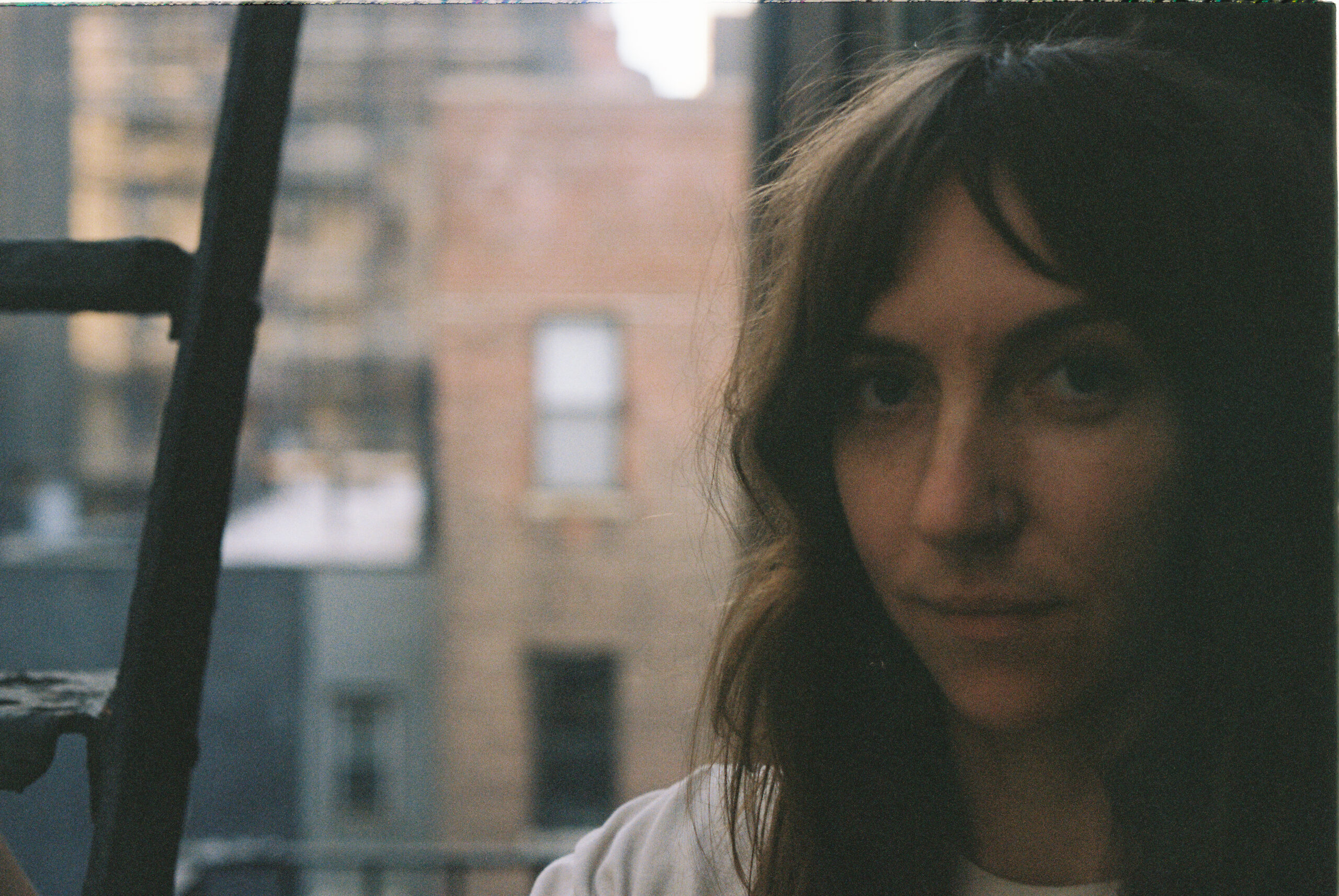We've Got A File On You features interviews in which artists share the stories behind the extracurricular activities that dot their careers: acting gigs, guest appearances, random internet ephemera, etc.
Raphael Saadiq has probably made at least a couple of songs you love, even if you never realized it. Born Charles Ray Wiggins in Oakland, California in 1966, he grew up playing bass in church bands and studying bassists like Sly And The Family Stone's Larry Graham and songwriters like Earth, Wind & Fire's Maurice White. "From maybe eight or nine years old, I started playing bass. It was really myself and a piece of vinyl, playing with Earth, Wind & Fire records, James Brown records, Gap Band records, gospel, all the Hawkins Family records."
In 1986, Saadiq formed Tony! Toni! Tone! with his brother, guitarist D'Wayne Wiggins, and their cousin, drummer Timothy Riley. Saadiq was a reluctant frontman, but his silky voice became the signature sound of a long series of R&B hits including "Feels Good," "Anniversary," and "If I Had No Loot." "I didn't wanna be the lead singer of the Tony's. I just sang a couple songs and the producer's like, 'Well, he has to sing most of the songs,'" he remembers. "That was never my thing. I was a bassman, I wanted to be hiding on the side, next to the drummer." Tony! Toni! Tone! sold over 4 million albums over the next decade as one of the few successful R&B bands of its time, thriving in both the New Jack Swing era and the Neo Soul era. Saadiq left the group to produce for other artists, form the group Lucy Pearl, and eventually make solo albums.
As one of modern soul music's great Renaissance men, Saadiq has made an astonishing amount of great music with a dizzying array of collaborators. As a solo artist, he's released five critically acclaimed albums, including his 2002 debut Instant Vintage and the 2008 Motown homage The Way I See It. His most recent album, 2019's poignant and cathartic Jimmy Lee, is named after his brother Jimmy Lee Baker, one of four of Saadiq's siblings who died young.
Saadiq has won Grammys for his work with Erykah Badu and Beyonce, and was nominated for an Oscar for his work with Mary J. Blige on the song "Mighty River" from the 2017 film Mudbound. He's scored over a dozen films and TV series, including Insecure and Lovecraft Country. He helped launch the careers of Joss Stone and Bilal and has worked with legends ranging from Stevie Wonder and Whitney Houston to the Bee Gees and the Isley Brothers. "What can I say? I've been around the best. Elton John, Prince, Maurice White."
For the first time in his career, a song Saadiq worked on hit #1 on the Hot 100 earlier this year, a couple months before his 58th birthday. He remains, as ever, more interested in simply going to work in his North Hollywood studio than the fame or accolades it may bring. "If you're sitting in front of an engineer with speakers facing you and a ton of equipment sitting in front of you, that's like a kid in a candy store," he says. "You're honored and privileged to know, hey, everybody don't get this opportunity in life to sit in a room and make something. You don't know what in the hell's gonna come out, but you're so down to see what it is, and that's how records like that happen. You show up."
I talked to Saadiq for an hour on Zoom last week. In conversation, his voice is deeper and raspier than you might expect from his singing voice, although perhaps that's partly due to the fact that it was 9 a.m. in California when we spoke.
Beyonce's "Cuff It" (2022) And "Texas Hold 'Em" (2024)
I was excited for you when "Texas Hold 'Em" came out, because I believe that's the first time a song you've worked on has hit #1 on the Hot 100.
RAPHAEL SAADIQ: I think so.
Was it made clear to you that Beyonce was doing an entire country album, or were you just working on one song in that style as far as you knew at the time?
SAADIQ: Nah, I think at the time I was working on Renaissance, and one of the things they asked me to work on was "Texas Hold 'Em."
Were you involved in the lyric or melody for these songs, or were you involved more in the arrangements or instrumentation?
SAADIQ: Most of them was instrumental, and then "Bodyguard" was melody and lyrics and music.
I look at the credits for a song like "Cuff It" and it's Beyonce, you, Nile Rodgers, The-Dream, and Sheila E., that's just a incredible lineup of talent on one song.
SAADIQ: Oh yeah, definitely. [Beyonce] has an amazing ear for music, so you want the best to work on a record. And I was honored to actually be on a record with Nile Rodgers. Growing up such a huge fan of Nile Rodgers and Chic and Bernard Edwards, for me that was awesome.
What did you do on "Texas Hold 'Em"?
SAADIQ: I wrote on it and played bass, guitar, I play a lot of different instruments on a lot of the records I produced. Honestly, I mostly have to go back with my engineer to find out what I did, because I don't really keep up with it. Everybody's not at the studio all the time, so if somebody's not in the studio, you have to jump on drums. For some songs I would play drums, and sometimes I would use Lemar Carter, who's an amazing drummer from Michigan. So we just do whatever to get the job done. Sometimes we have to call each other and go, "Did you play drums on this?" He's like, "No, you played drums on that." And that's how it's been, like in all productions I have done for the last four or five years, it's like a running joke with my really good friends. But I did play the drums on "Cuff It."
I was curious about that, because when someone is known as a multi-instrumentalist, I feel like that means they either play everything on a song including the drums, or everything except the drums, so I was wondering if you did your own drums.
SAADIQ: I do a lot of drums, a lot of guitar, a lot of bass. But then if somebody could do a better job than I think I could do, I would rather have somebody else play drums or guitar. Nile Rodgers sort of heard the part of "Cuff It" that I didn't. He came in and was, y'know, the legendary Nile Rodgers. I watched this guy play in funk festivals in Oakland at the Coliseum when I was 13 years old.
Tony! Toni! Tone!'s "It Never Rains (In Southern California)" (1990)
Albert Hammond had a big hit in 1972 called "It Never Rains in Southern California" that's a completely different song from the one you released under the same title. So I always wondered if you were directly inspired by that song or if they're unrelated.
SAADIQ: Never heard of it, never heard of him, never knew it was a song title until maybe five, six years after. I've maybe heard it once now.
Yeah, it's one of those hits from the '70s that has kind of disappeared compared to other songs that charted that high, I rarely hear it either.
SAADIQ: But I can also say now, knowing what I know, nothing's new under the sun, somebody's already done it or something close to it.
And everything now is so litigious, you might have to Google to make sure nobody else has done something already, but back then things were a little more free in terms of people having similar ideas without it being a problem.
SAADIQ: Yeah, I think you just have to create. It comes from inspiration, and styles and vibes come from another place. So I think you should stay away from Google, you should just keep creating. I think that's the problem. I mean, if it's so close to something, of course, you gotta pay up. But I'm definitely inspired by everything that I've seen, and when I go back and listen to some of the artists that I was inspired by, and now that I've listened to so much music, I can see where they got it from.
Touring With Prince And Sheila E. (1986)
So your first job in the music industry was playing in Sheila E.'s band, and you worked on her self-titled album and also the 1986 tour where she opened for Prince?
SAADIQ: Yeah, for sure, that was the Parade Tour, yeah.
And when Prince would do club shows after the main concert, sometimes you'd be in his backing band for those?
SAADIQ: Yeah, we'd be the band for that. His after party shows were like, we basically stayed in show clothes to go to the second show. Playing with Prince, it wasn't like you can come to the second show in what I would naturally like to wear, some 501s and a windbreaker and a Detroit baseball cap. No, we were in show clothes, we were dressed the way he'd want us to dress.
We had the true experience of practicing for like 14, 15 hours a day with Sheila, I believe that was handed down to her from Prince. To rehearse 15 hours a day to have the best show you can have, a live show with no playback, dance moves, a lot of extreme difficulty playing and moving and dancing and singing at the same time. It was sort of like going to the best university I could've ever went to after high school — even though our high school had a pretty tough program of music and performance. I was very fortunate to be a part of this high school, it was very legendary, called Castlemont. It was run by Phil Reeder and Gregory Cole, and they were pretty strict and had a really hardcore way of making us understand what we were doing and what was our responsibility. To get the gig with Sheila E. and to play with Prince, and to watch both of them at the height of their careers, was the best thing for a kid at that age to see.
Were you the youngest guy in the band?
SAADIQ: No, I wasn't the youngest, two of my friends I took with me, Carl Wheeler was my neighbor, and I took Timothy Riley, the drummer, another member of the Tony's. I got the gig first and I sorta scouted them. Right after I got the gig with the audition with Sheila, my mother was like, "You should take Tim to audition." I took him, and Sheila was like, "Who is that?" I was like, "That's my friend Tim, he plays drums." She said, "Let me hear him play." He jumped on the drums, and he got the gig. And I brought Carl Wheeler the next day, he got the gig on keys, so we were all the same age.
You think of most musicians and what they would do to unwind after a concert, it would not be playing a second show later that night. So I feel like that's Prince in a nutshell, he just wanted to keep playing music, that's how he relaxed. I've heard bootlegs of some of those after party club shows and he pulls out all these covers and different songs. Did he just throw different songs at the band and you'd have to stay on your toes and keep up?
SAADIQ: He threw some songs at us, but we wasn't really in his band, so if we knew his songs, it's because we just knew them. He would just start playing "Anotherloverholenyohead" and we would just come in. He knew we knew music 'cause we were from Oakland, and he really liked Oakland musicians, y'know, because everybody in the world wanted to be Sly And The Family Stone. And we grew up in Oakland where Sly was the norm for us. We were about musicianship, but we also really wanted to play the records, and that's the thing about Sly, that's the thing about Prince. They were absolutely incredibly funky and gifted on their instruments, but they knew how to make records that would last three minutes and be impactful records. That's a gift that a lot of people don't have.
Did you run into Prince much in the years after that tour? Did you have a rapport with him?
SAADIQ: I had a rapport with him. I would see him quite a bit. I played at this festival in Copenhagen, on my Stone Rollin' album. I was singing a song called "Stone Rollin'" that he really really loved. He came to me and said, "Ray Ray, you snuck one on me, man. I was watching the Jay Leno show and this record came on and I was like, 'Ooh, Ray Ray done snuck one on me.'" He called me Ray Ray. It was a really bluesy song, and the first lyric is like, "Fat lady shakin', backbone breakin', come on." He would like a lyric like that. As Minneapolis as he was, his dad was from Louisiana, and he used to tour in the chitlin circuit when he was a kid, so he had that real Southern background that people don't really speak about. My family's all from Shreveport and Texas. So when you got that gutbucket soul, that Southern soul, y'know, you like swamp soul, you like all kinds of music. And when you add 'em all up you have this incredible amount of respect for people who have those similar things.
So when I played in Copenhagen, he came on the stage when I played that song, and he started dancing. I didn't know he was on the stage. People were screaming, it got extremely loud when I was singing. I thought that the crowd just went crazy for me all out the blue, but then I looked around, he was just up there dancing. And it's a rainy festival, it's a little wet out there, everybody's partyin', and Prince is out there just dancin'. I turn around, I'm like, "Oh damn, that wasn't for me, that's for him" [laughs].
Stone Rollin' (2011)
Let's talk about Stone Rollin' some more, because I think that's my favorite of your solo albums. Lots of your music mixes old fashioned styles with modern sounds, and I thought the fusion was really perfect on that album.
SAADIQ: Yeah, that record was after I did The Way I See It, so I was trying to figure out how to keep it going and not wait for years to put out another record. I felt like a mixture of blues, rock, and me being the moderator of it, how could I keep this going? So I was into harmonicas, harps, steel guitar, I would use a lot of blues references to Muddy Waters, the Rolling Stones, Prince, all into one. Dirty guitars, bass in your face, big kick drums, tambourines, and just raw vocals. And I felt like that's maybe the second time that I actually enjoyed listening to my vocals back, from The Way I See It to Stone Rollin'. That was when I started to be like, "Okay, I really like this version of me, vocally, musically."
I also love the use of Mellotron on Stone Rollin'. It's such a cool instrument and people associate it with the '60s, but it still can really pop when people use it on records now.
SAADIQ: Yeah, I love the Mellotron, and mine is kind of a malfunctioning Mellotron, it's an old one. I can get it fixed, but I won't get it fixed because I like the way mine sounds.
Right, it's not digital, so the tape deteriorates and you get that sort of wobbly sound, that's part of what I love about it. I was in Cleveland once and checked out the Rock & Roll Hall Of Fame, and the instrument I was most excited to see was the Mellotron that the Beatles used on "Strawberry Fields Forever."
SAADIQ: It's just a great instrument, and I look at mine every day, sitting in its own little area. And then when you… I can't say find a song that it fits. Until you turn it on and play it, you can't foresee it and go, "The Mellotron will sound great on this," you have to actually turn it on and try it.
D'Angelo's "Untitled (How Does It Feel)" (2000)
Let's talk about your work with D'Angelo. From the outside, D'Angelo seems to have a complicated relationship with stardom. And the two songs you co-wrote and co-produced on his albums, "Untitled" and "Lady," are pretty much his two biggest songs. So I almost wonder if he worries about working with you and making a hit, instead of wanting to make a hit like most artists.
SAADIQ: We don't really work, we're just, like, friends. We get together. If I lived in New York we'd probably work a lot more, but he doesn't come to LA as much and I don't go to New York as much. We're just in two different places. I think those are two great songs, but honestly, his other songs are bigger than those songs to me.
Yeah, obviously he's no slouch at making music, he's got lots of great songs. Were you guys friends before you did "Lady"?
SAADIQ: No, we actually met right around that time.
I've seen you talk about how "Untitled" came about spontaneously when you were in New York?
SAADIQ: He had an idea for "Untitled," and then we sort of got together at Electric Lady, I was in town and D was like, "Let's work on something." I actually stopped by to get a joint. I was just in the Village walking around, I wanted a joint, I just rung the bell. He came to the door, he's like, "Hey bro, yeah, I got a joint, but let's work." And then we just worked for maybe a few hours, and that's what happened.
Were you developing the structure of the song with him or more playing on it?
SAADIQ: It was structure and writing parts, but the actual chorus is him. He's a huge talent, I mean, he has talent oozing out his fingers. So when you get two people in a room like us, it's dangerous for us both to be in a room. If we were both in a room a lot more, it wouldn't even be right.
Yeah, between those two songs and "Be Here," you have a perfect track record together. "Untitled" is interesting because it's a relatively low-key song. The album version is seven minutes long. I'm sure the video helped it become a hit, but I wonder if you guys even had any idea it could be a radio song. It takes its time to get going, it's a subtle song for a hit.
SAADIQ: Yeah. It's the energy, it's that "not giving a fuck about what the industry is listening to" vibe. I think that's how we feel, like you can't give your time on Earth to what you think the industry wants. You gotta come from the heart first and listen to what you want. And then hopefully people gravitate to that. You have to go in just open to do whatever.
Brent Faiyaz's Wasteland (2022)
Brent Faiyaz's Wasteland was a really successful album that you did three songs on a couple years ago. And he's from a completely different generation; he was born in the '90s towards the end of the Tony! Toni! Tone! era. What was it like to work with a newer artist like him?
SAADIQ: I met Brent through a friend of mine, Kerby [Jean-Raymond], who's a fashion designer for Pyer Moss. They're good friends, and I'd been to dinner with Brent a couple times. It's a blast to work with him, he has really good ideas, he's spontaneous, he knows his history in music. If he hears something he likes, he's like, "Oh, I could do something with that." With ["Angel"], that's a Clavinet D6 with slapback on it, and y'know, who's gonna take a track like that? He heard it and just wrote to it right then and there.
Yeah, it's an unusual track and it has no drums on it, not a lot of people would go for that.
SAADIQ: I love that record. But I like him as a creative person. I like artists that have a style about 'em, and smart at business too. I like being around that energy too, he's smart.
Yeah, what he's done independently is amazing, I don't think many people even realize he's an independent artist because of the level of commercial success he's had.
SAADIQ: It's amazing.
Solange's "Cranes In The Sky" (2016)
Let's talk about Solange, "Cranes In The Sky" was a song that really connected deeply with a lot of people. I've read that she got that instrumental from you many years before it became a song?
SAADIQ: Yeah, she had an instrumental, because she came by. We was gonna work together on something, I was gonna have her help me write a song. But then she heard that, and she took it and she had it for a while, and then I hadn't heard it for years. I wanna say it was eight years old when she put it out. And we didn't have a multi-track, because I lost the files, and a friend of mine named Conrad Montgomery, I just called him randomly one day and we started talking. And I told him that Solange called me, she was trying to find that track that I did. I had it, but I was demoing it, it was on a CD. And he said, "You know, you gave me a copy of that." He was making short films and he wanted to use that music for a short film. So he had a copy of it, and that's the only way I got a copy was from Conrad. And then I sent it to her.
And that song, I think people would never dream that it was a track that had been kicking around for that many years, it felt perfect for the moment that it came out, perfect for her at that point in her career. Are those live strings or a synthesizer?
SAADIQ: That's the Mellotron. I played bass, I played the Mellotron, and I played drums. And then I had my nephew Dylan Wiggins play additional piano over the top of what we did, and then Solange played some really deep bass note on the keys that added to it. The sound was like a bell but it wasn't a bell.
And it was after she came back and finished that song after all those years that you worked on other songs for A Seat At The Table?
SAADIQ: Yep, correct. She came to my studio, and a lot of the record was put together, so I would add additional stuff to a lot of records and see what she wanted. She would tell me what she wanted, I didn't really have to think until I got on my instrument, guitar or bass, and then she'd be like, "Ray, I think I need something here." If I was playing too much, she would tell me, but for the most part, she would just let me play. She has a hell of an ear, because I would stop her and ask her, like, "You really hear that?" She would go, "Yeah."
Elton John's The Diving Board (2013)
Elton John's The Diving Board is the only album he's done in the last few decades that was primarily just piano, bass and drums like his early records, and you were the bassist on most of it. How did that come about, did you just get a call from Elton John out of the blue?
SAADIQ: Yeah. His manager, I got a call from him and Elton. And Elton is really cool, super supportive of a lot of music that I've done over the years. They call me and ask me to play bass on the record. It was a great experience to watch him, y'know, walk in the studio every day with lyrics from [Bernie Taupin], and he would just go to the piano and he would work it out. We would walk in the room, he'd give you a hug and he'd go right to the piano and work out a song. The musicians was there, he'd walk in, he'd make our parts up, we'd read the charts.
It was amazing, because we recorded it all to tape, and it was so good to listen to the tape spin in between the takes, listening to the tape rewind back. And it reminded me of when I first started recording, listening to tape, you know, when you have time to reassess what you're gonna do next. In the digital world, you could just hit the spacebar and go, go, go, go, go, go. It made me go back and turn on my tape machine. It got me ready for the next albums that I was working on, but it was amazing to play bass with him and, y'know, to talk about the history in music, just to be around that greatness.
And of all the big stars of that generation, Elton John is the one guy who seems to genuinely follow new music and keep up with everything. I'll get into a new band and then realize he's already been championing them for years.
SAADIQ: Yeah, he does. I saw an article about me in the LA Times and he was talking about me, and you go, "Damn, Elton John is talking about me?" As a kid you grew up watching this guy with these big glasses singing "Bennie And The Jets," like "Who is this funky white boy on keys?"
One thing I wonder, when you're playing bass on a record where the main instrument is piano like with Elton John, is it different because his left hand is already down in the lower register where you play? Or is playing bass pretty much the same as in any other situation?
SAADIQ: It's the same as playing in church, because in church you're playing with a piano player and a Hammond B3 player. And you have to play good enough to make the organ player not play the foot pedals. I had a lot of training in that, to move in those pockets where you have to make a piano player give up some of that left hand. But if you can't make them give it up, they're gonna keep playing it.
"Ask Of You" (1995)
Let's talk about "Ask Of You" from the Higher Learning soundtrack, because that was a big solo hit for you, but it was long before you made solo albums and even before the last Tony! Toni! Tone! album. So did you look at that as a one-off at the time or were you trying to transition into a solo career?
SAADIQ: John Singleton called me and asked me to write a song for the movie. I wrote "Ask Of You." The key word in that song is Deja, which was [Tyra Banks'] role, her name was Deja. I've never seen the movie. He never showed me a clip for any movie, he just always told me what he needed and I did it. So it was in the movie, [Epic Records president] Polly Anthony was in the movie theater, and behind her was Russell Simmons and the late Andre Harrell. When the record came on, Andre said, "That's a smash." She walked outside and called me and asked me would I shoot a video for it, that's how that record happened. Without that, the record never would've been a single.
What did you think of when Wale and Jeremih sampled that record and had a big hit with it a few years ago, "On Chill"?
SAADIQ: I loved it, yeah, I loved it. It's funny, you just never know what people take to, I was really surprised at how long it still lasts. Now if I play that at a show, people love it. And so many people walk up to me and go, "I named my daughter Deja" and I smile.
It's interesting because you've been around long enough that I'm always looking at the writing credits on a song and seeing your name, but I don't know if you worked on the record or if it sampled something old that you did. I saw your name on Muni Long's new album, but then I listened to it and she had a D'Angelo sample.
SAADIQ: Yeah, it happens, yeah. I see those clearances all the time. People also walk up to me and go, "Thank you for clearing that record for such-and-such." It happens a lot now.
"Get Involved" was another soundtrack single from early in your solo career that I loved, I don't think I'd even made the connection that you were in Tony! Toni! Tone! when that came out, I just loved that song.
SAADIQ: Yeah, me and Q-Tip, Kamaal. Q-Tip is a good friend of mine, too, he's another person that I work with a lot. We have so many songs that we haven't finished or haven't put out. But it's easy working with Q-Tip, because he's, y'know, a person who samples, he's also a person that listens to a lot of music, messes around on keys, and he's also a bass player now. Every time I talk to him, he's like, sweatin' profusely, playin' basslines.
Do you give him any advice on playing bass?
SAADIQ: He'll call for some advice. He'll FaceTime me and call for some advice on bass, but he's already killin' it.
Lucy Pearl's "Dance Tonight" (2000)
You also started a group with Ali Shaheed Muhammed of A Tribe Called Quest and Dawn Robinson of En Vogue. How did Lucy Pearl come together, and was "Dance Tonight" primarily Ali Shaheed's beat or a collaboration?
SAADIQ: It was a team. Jake and the Phatman was the production team that I work with, they're really good, and it was Ali and then me. We had a few topline writers writing with us so we could, y'know, make the process go smoothly. That was the nucleus of the team and we just hammered [the album] out pretty fast, six months, I think we were done.
You said you're kind of a reluctant lead singer, so even after you had done solo singles, you still formed a new group, Lucy Pearl, so were you just looking to keep playing in groups.
SAADIQ: I was really running from being the solo act. If Lucy Pearl would've lasted, Instant Vintage most likely wouldn't have happened as fast. That just happened because the group only lasted for maybe six months after we put out the record. Dawn, she wanted to do a solo album. I'm a band guy, I like bands.
Even with the solo records, you might use different groups of people, but you get to be a bandleader.
SAADIQ: Yeah, I didn't know anything about bandleading. I talked to Maurice White, he was a bandleader. If I would've known more about bandleaders, if I would've known the job I was actually doing, I probably would've been able to keep groups together. But if somebody wanted out or if somebody was actin' out, it just seemed like it wasn't working, I would just agree with them and say, "Okay, well, thank you for your service and bye." Bandleaders weren't like that. Bandleaders would work things out, make everything work.
Band are, y'know, unless you're makin' Rolling Stones money, people don't stay together. If you're playin' a stadium, nobody's turning down a couple million a night. But y'know, bands make mistakes and break up, and then nobody's making any money. They're not making the money they used to make with the band. You look at the Rolling Stones, they stay together because they saw people rolling up in stadiums and buying tickets and merch, you don't wanna let that go. And unfortunately with a lot of bands, Black and white, that's not the case.
Tony! Toni! Tone!'s Reunion Tour (2023)
With Tony! Toni! Tone!, those guys are part of your family, so I assume you never fell completely out of touch when the group wasn't together. What was it like to do a reunion tour last year?
SAADIQ:It was for the fans. I just felt that we owed them one. I left in '96 right at the peak of the Tony's blowing up. So it was my way of saying "Thank you" to the fans who gave us the shot. It was a bucket list thing, it was beautiful. It was amazing playing for all the people that showed up. We took their phones away, I wanted people to enjoy the music the way we made the music, or how I fell in love with music, by going to concerts with no phones. I learned so much from being at shows and being so focused on the music, and the people around me at the shows too. The show is also about the people that are next to you. We planned on doing an album, that was my idea and Tim's idea, but I don't think it was gonna work. But what we did was beautiful, it was definitely positive, we had a great time every night, we laughed, we joked, it was no hard time, no bad feelings, it was great.
Does it hit differently when you sang, "It's our anniversary," and it really was the 30th anniversary of that song?
SAADIQ: Oh yeah, that felt good, because you're around the guys, and then it's one of the audience's favorite songs, and everybody could see all the members at one time. It's definitely powerful to play that song.
We rely on reader subscriptions to deliver articles like the one you're reading. Become a member and help support independent media!

